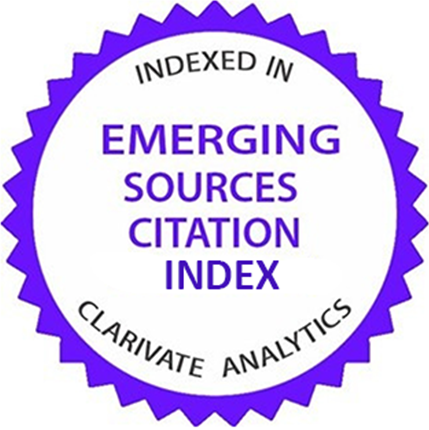Hospital safety index: evaluation of the readiness and safety of hospitals in Isfahan province, Iran
Abstract
Objective: Hospitals play a vital role in disaster management and their function must be maintained during crises. Isfahan province is susceptible to major crises and disasters at any time of the year. The study aimed to investigate the hospital safety index (HSI) in hospitals in Isfahan province.
Methods: This cross-sectional study was conducted using the HSI questionnaire of the world health organization. The safety of all 55 hospitals in Isfahan province was evaluated with the Persian version of the questionnaire from 2017 to 2022. In this study, all hospitals were evaluated by a group of experts from the emergency operations center (EOC) of Isfahan University of Medical Sciences, and the checklists were completed with the cooperation of the hospital disaster committee, visiting the hospitals, and interviewing the personnel. Results: The safety level of hospitals has improved from 2017 to 2022 so in 2022, 38 hospitals (69.09%) had a high safety level, and 17 hospitals (30.91%) had a medium safety level. This increase in safety has happened in all three components of safety (functional, non-structural, and structural safety). There was no significant difference in the overall hospital safety score between academic-educational, non-academic governmental, social security and military, and private and charity hospitals (P<0.05).
Conclusion: Although the safety in the hospitals of Isfahan province has improved due to the continuous disaster prevention and preparedness activities, hospitals still need to improve to achieve higher levels of safety. The HSI shows how well a hospital can maintain its organization and performance during disasters. This index will be useful for decision-making and policy-making to prioritize administrative and civil interventions.
2. Esmailian M, Salehnia MH, Shirani M, Heydari F. Reverse triage to increase the hospital surge capacity in disaster response. Adv J Emerg Med. 2018;2(2):e17.
3. Rajaei Ghafouri R, Mirza Hosseini S, Pouraghaei M. Are our hospitals safe against disasters? An evaluation of hospital safety index in Tabriz, Iran. J Anal Res Clin Med. 2018;6(3):139-44.
4. Sternberg E, Lee GC, Huard D. Counting crises: US hospital evacuations, 1971-1999. Prehosp Disaster Med. 2004;19(2):150-7.
5. Ardalan A, Kandi M, Talebian MT, Khankeh H, Masoumi G, Mohammadi R, et al. Hospitals safety from disasters in I.R.Iran: the results from assessment of 224 hospitals. PLoS Curr. 2014;6.
6. Jahangiri K, Izadkhah Y, Lari A. Hospital safety index (HSI) analysis in confronting disasters: a case study from Iran. Int J Health Sys Dis Manage. 2014;2(1):44-9.
7. Djalali A, Ardalan A, Ohlen G, Ingrassia PL, Corte FD, Castren M, et al. Nonstructural safety of hospitals for disasters: a comparison between two capital cities. Disaster Med Public Health Prep. 2014;8(2):179-84.
8. Moradi SM, Nekoei-Moghadam M, Abbasnejad A, Hasheminejad N. Risk analysis and safety assessment of hospitals against disasters: a systematic review. J Educ Health Promot. 2021;10:412.
9. Tabatabaei S, Abbasi S. Risk assessment in social security hospitals of Isfahan Province in case of disasters based on the hospital safety index. Int J Health Sys Dis Manage. 2016;4(3):82-7.
10. Peyravi M, Marzaleh MA, Gandomkar F, Zamani AA, Khorram-Manesh A. Hospital safety index analysis in Fars Province hospitals, Iran, 2015-2016. Am J Disaster Med. 2019;14(1):25-32.
11. Heidaranlu E, Khankeh H, Ebadi A, Ardalan A. An evaluation of non-structural vulnerabilities of hospitals involved in the 2012 East Azerbaijan earthquake. Trauma Monthly. 2017;22(2):-.
12. Feizolahzadeh S, Elahi A, Rahimi F, Momeni A, Mohsenzadeh Y. Hospital safety index in hospitals affiliated with Alborz University of Medical Sciences in 2015. J Disaster Emerg Res. 2019.
13. Zaboli R, Sh T, Seyyedin S, Malmoon Z, Hoseini Shokuh S. Organizational vulnerability and management of clinical departments against crisis. Journal Mil Med. 2009;2(3):99-103.
14. Schultz CH, Koenig KL, Lewis RJ. Implications of hospital evacuation after the Northridge, California, earthquake. N Engl J Med. 2003;348(14):1349-55.
15. Barbisch DF, Koenig KL. Understanding surge capacity: essential elements. Acad Emerg Med. 2006;13(11):1098-102.
16. Khorram-Manesh A, Hedelin A, Ortenwall P. Hospital-related incidents; causes and its impact on disaster preparedness and prehospital organisations. Scand J Trauma Resusc Emerg Med. 2009;17:26.
17. Lari A, Jahangiri K, Hajinabi K. Hospital safety index analysis in cofronting disasters: a case study. Q Sci J Rescue Relief. 2013;5(1)(1):9-18.
18. Djalali A, Hosseinijenab V, Peyravi M, Nekoei-Moghadam M, Hosseini B, Schoenthal L, et al. The hospital incident command system: modified model for hospitals in iran. PLoS Curr. 2015;7.
19. Salevaty J, Khankeh H, Dalvandi A, Delshad V. The impact of nurses training and applying functional and nonstructural hospital safety in preparedness of Razi and day hospitals in disasters based on hospital safety index. Health Emerg Disasters Q. 2015;1(1):17-24.
20. Salari H, Esfandiari A, Heidari A, Julaee H, Rahimi S. Survey of natural disasters preparedness in public and private hospitals of Islamic republic of Iran (case study of shiraz, 2011). Int J Health Syst Disaster Manag. 2013;1(1):26-31.
21. Bradley E, Hynam B, Nolan P. Nurse prescribing: reflections on safety in practice. Soc Sci Med. 2007;65(3):599-609.
| Files | ||
| Issue | Vol 8 No 2 (2024): Spring (April) | |
| Section | Original article | |
| DOI | 10.18502/fem.v8i2.15459 | |
| Keywords | ||
| Disasters Hospitals Hospital Safety Index Safety | ||
| Rights and permissions | |

|
This work is licensed under a Creative Commons Attribution-NonCommercial 4.0 International License. |










